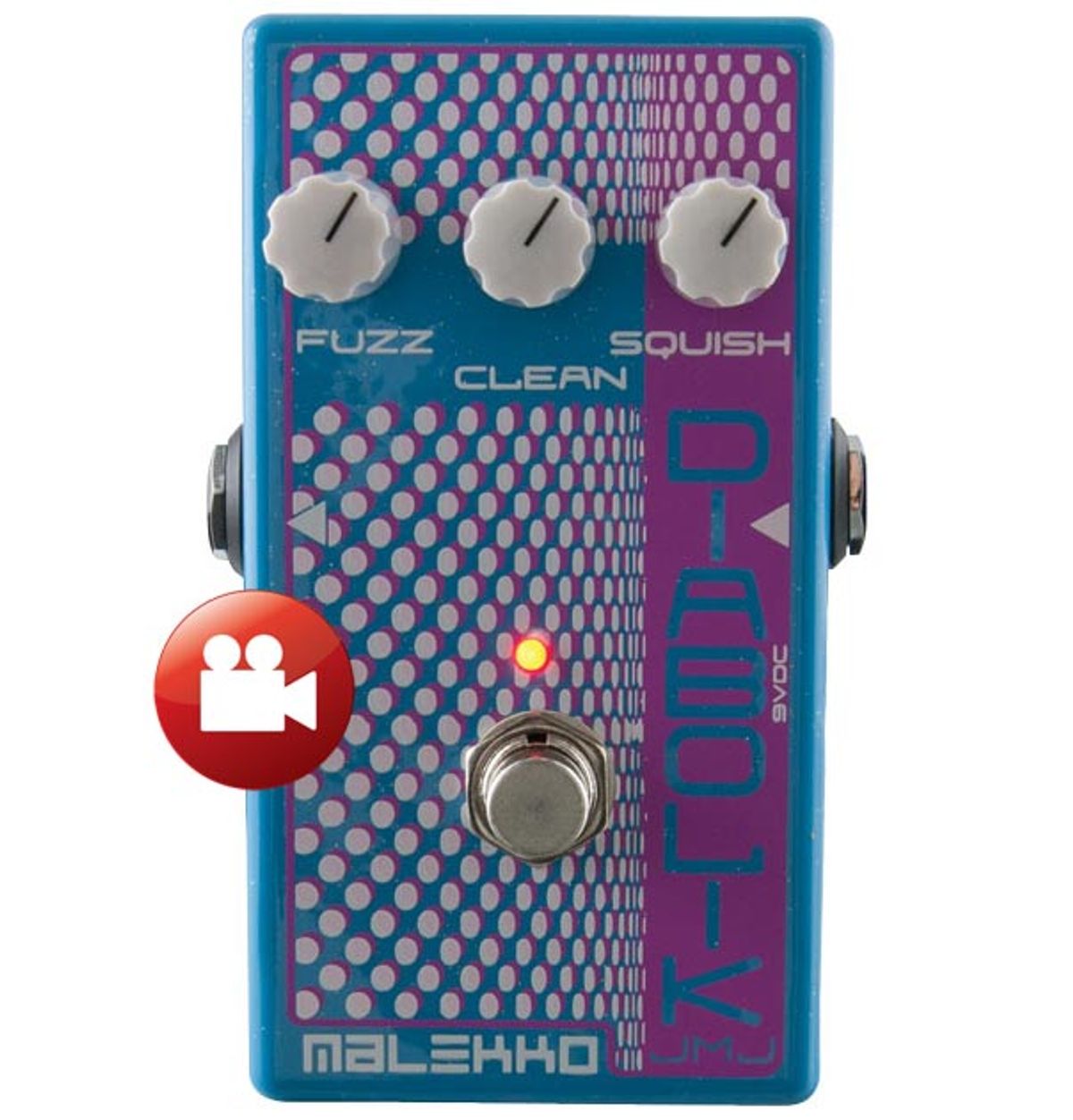A roaring new analog fuzz for bassists designed in collaboration with Justin Meldal-Johnsen.
Malekko Heavy Industry Corporation is the creation of former Ministry bassist and producer Paul Barker synth junkie Josh Holley—a tandem that knows heavy and weird. One of the latest pedals to come out of the Malekko sonic laboratory in Portland, Oregon, is the Diabolik. It’s a signature pedal that was designed in conjunction with Justin Meldal-Johnsen—long-time bassist for Beck, and, like the creative element at Malekko, a funky tone enthusiast. Meldal-Johnsen wanted to build on the tonal advantages of another Malekko pedal but reduce the footprint size and simplify the control layout. Here, we find out if he got what he wanted.
Ratings
Pros:
Superb tones, beefy fuzz, compact footprint.
Cons:
Some players may want an EQ to help sculpt tones even further.
Tones:
Ease of Use:
Build/Design:
Value:
Street:
$149
Malekko Heavy Industry Corporation Diabolik
malekkoheavyindustry.com
Squish Squash
The Diabolik is a very straightforward design and very intuitive to use. Better still (for the space conscious,) the rugged blue and pink chassis doesn’t take up much more space than a bar of soap. The Diabolik can operate on a battery, but you’ll probably want to power the pedal with a 9V power supply (not included) to avoid the much-dreaded 4-screw battery replacement procedure. The three controls are pretty self-explanatory: the fuzz control determines the amount of fuzz, clean is the amount of clean signal you want mixed in, and the squish dial controls the character of the fuzz. I’m a big fan of simple layouts, and knowing that Meldal-Johnsen had a hand in the design, I was psyched to hear this pedal.
Dia-bass-ical
I ran my favorite Music Man through an Eden WTX500 and matching D410XLT cabinet starting with all the Diabolik’s controls at zero. To get any signal, you need to inch up the squish control, but you don’t need much before the pedal springs to life. With the fuzz at the noon position, the clean off, and the squish at 9 o’clock (which is barely engaged), the pedal delivers a fantastically tight fuzz, with harsh harmonic overtones that emulate dirty synth tones. Adding clean signal makes the fuzz more traditionally fuzzy and robust.
Diming the clean control, leaving the squish at 9 o’clock, and rolling the fuzz back to 9 o’clock takes you in the other direction, and it hit me with a dark, vintage, overdriven-amp tone a whole lot like an Ampeg V-4B pushed to its limit. Harmonic overtones shifted as I eased up the squish up to the noon position—opening up the mids and letting the pedal and the natural bass tone breathe a little. The pedal gets more sinister when rolling the fuzz up higher, and when both clean and fuzz controls are set aggressively the sound is downright killer.
The Verdict
The Diabolik is a well-crafted pedal and the keen minds at Malekko have done a great job harnessing the raw power of bass fuzz into a budget- and user-friendly package. Where I do like the simplicity of the controls, the predetermined harmonic settings can be a tiny bit limiting. This is not an all-bad thing, however, since the ability to add clean tones beefs up the signal where other pedals often fall short. If you’re a bassist ready to get your fuzz on, the Diabolik is full of tones to explore and make your own.
Watch the Review Demo:


